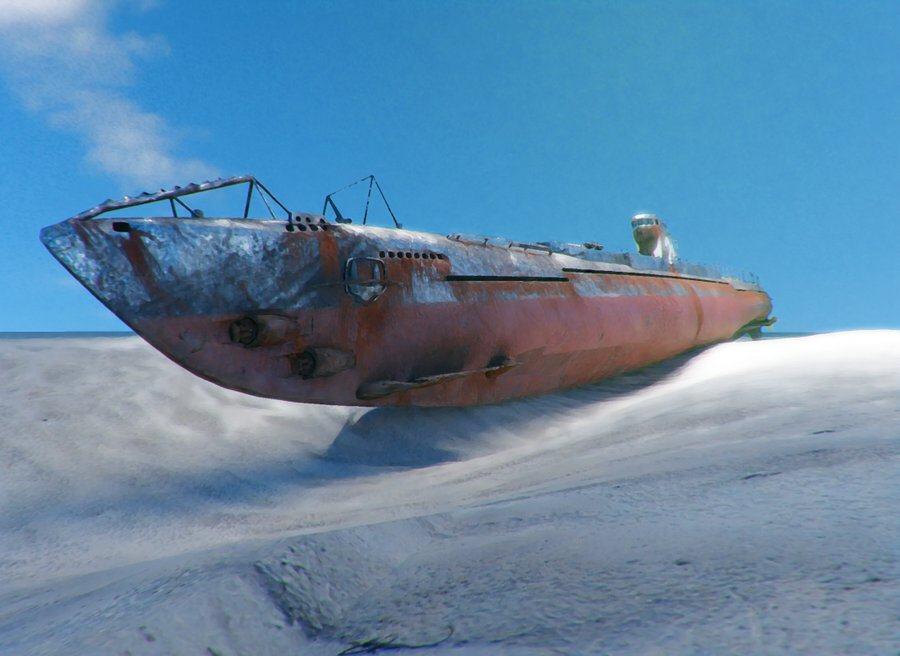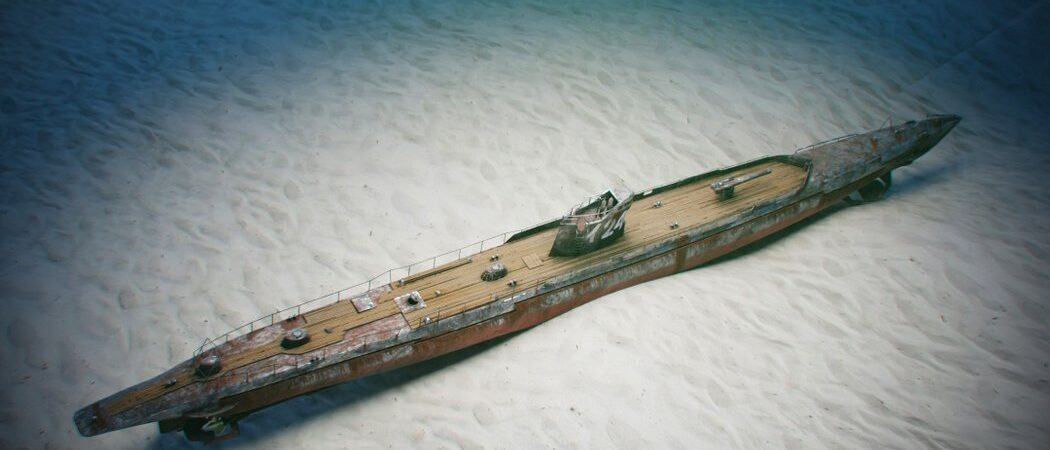I-124 was a WWII Japanese submarine that was sunk with all hands (80 crew) by Allied forces on 20 Jan 1942 while on a mine-laying mission in the Beagle Gulf, Australia. She lies in 46 metres (150 ft) of water, 84 kilometres north-west of Darwin, NT.
In anticipation of tomorrow’s 80th anniversary, in October 2021 the Northern Territory Government Heritage Branch undertook a joint project with the Australian Institute of Marine Science (AIMS) using the AIMS research vessel Solander to map the wreck using state-of-the-art remote sensing equipment.

I-124 was rather unlucky. Earlier in the day, her sister submarine I-123 had fired a spread of torpedoes at an American oiler, escorted by two destroyers. She missed, but the alarm went up, and she was forced to flee.
When the authorities in Darwin were alerted, they promptly dispatched three Royal Australian Navy corvettes to hunt for her. Unfortunately one of them, HMAS Deloraine, encountered I-124 instead, who fired a torpedo at her, and the corvette started dropping depth-charges. I-124 was blown to the surface where she was briefly exposed before sliding back under the water. Deloraine dropped more depth-charges on the spot and was joined by a US Navy Kingfisher floatplane, which dropped a bomb on the spot.
I-124 may have been trying to slip away, but Deloraine dropped more depth-charges on her and then was joined by the other two corvettes who arrived to finish her off. So, despite the involvement of the US Navy floatplane, the sinking was considered to be, significantly, the first sinking of a Japanese submarine by an Australian ship during World War II
After the war, many rumours surrounded the wreck, including the suggestion that she carried a large quantity of mercury. In 1972, this attracted the attention of a marine salvage company who attempted to buy the salvage rights (they thought they had purchased the rights), but ended up in dispute with the Australian (and Japanese) government, who enacted the Historic Shipwrecks Act at the end of 1976. In response, one of the salvors dropped explosives on the submarine, and the government placed the wreck under special protection.
As a result, diving in waters near the historic wreck is strictly controlled, so this new virtual reality experience is the only way the Australian and Japanese public can access this historically significant site for the first time.

The virtual dive experience was created by Dr John McCarthy, a maritime archaeologist at Flinders University, who was commissioned to show the survey data in a way that can be understood and explored.
“Drawing on our data, and historic ship plans and photographs, we’ve created a virtual dive experience in which the video takes the viewer through the data gathering process, and then takes you down into the deep, to experience the wreck first hand,” says Dr McCarthy.
“The archaeological survey shows that the wreck is in good condition, but with some signs of degradation of the outer hull that require further investigation. Our aim was to create a realistic virtual experience with an accurate digital reconstruction of the submarine given the historical significance of the wreck in Australia and Japan.”

The wreckage is considered a highly significant site of shared heritage between Australia and Japan and former Japanese Prime Minister Shinzo Abe attended a 2018 memorial service in Darwin honouring the Japanese sailors who died.
Given the prolonged assaults made on I-124, it’s truly astounding that she survives in such good condition at all. Let’s hope she deteriorates only slowly.








